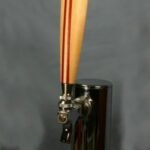Our world is multifaceted. Looking at a photograph from different perspectives opens up new horizons, opportunities, and sometimes even dangers. For example, any passerby with a phone in their hands can take a unique shot of an incident before any reporters, but for them, such a coincidence will be dictated solely by chance.
On the contrary, a professional photographer creates artistic photography as a work of art—it is his craft. But for a modern scientist, photography can become a very serious and extremely multifunctional tool. I would even say that photography can change the face of modern science.
Photography as a source of reliable information
So, photography has three key functions in the field of scientific research:
- Source of information.
- The object of research and justification of scientific hypotheses.
- Source of scientific evidence.
Initially, in the first stage of research, photographs become a source of information for us. Of course, this is only one source of information for scientific research, but it is the most reliable one.
This source reveals particularly significant information when we study periods, phenomena, and conditions that we cannot physically experience, such as the past. When we read a written document, we are essentially forced to psychologically invent an image. Our perception system is designed in such a way that a name is associated with an image: we read “car,” and we get some kind of image of a car. When we read a written document without photographs, we invent images based on the text.
Of course, there are engravings, drawings, frescoes, and paintings—all of these are taken into account, but it is clear that photography is the most reliable source of information. If, for example, we come across a fresco in a temple, we cannot be sure that it has not been altered during reconstruction, but if we have photographs of this temple before its reconstruction, this will allow us to obtain reliable information.
Today, when researchers need high-quality images for illustrations or comparative analysis, professional photo stocks such as depositphotos.com come to the rescue, offering thousands of high-resolution documentary images for scientific publications and presentations.
When we read a text document and imagine a picture in our minds, it does not correspond to reality. Furthermore, based on this imagined picture, the scientist begins to reason, concludes, and, as a result, does not obtain reliable data. If there is no photograph or drawing in a written source, we cannot be sure that it looked exactly like that.
Therefore, the entire history of humanity is divided into the era before photography and the era of photography. Today, we know exactly what our ancestors looked like and what they photographed. Without this photo archive, we would be lost in conjecture.
It should be noted that each person imagines the same object, phenomenon, or event in completely different ways. For this reason, we cannot consider our own or anyone else’s ideas to be reliable.
In science, accuracy is the highest virtue. That is why authenticity is so important.
The psychology of eras through the camera lens
Photographs play a very important role as a source of information when studying the psychology of people from past historical periods. Using special research methods, photographs can provide extensive and important information that allows us to understand the psychology of the period under study.
Many scholars, in particular, are guilty of applying modern psychology to past periods, applying 21st-century logic to, for example, the Middle Ages or the Renaissance. In different historical periods, people’s perceptions, thinking, and worldviews were different, and this is clearly visible in photographs.
Let us also remember how photography used to be a very expensive service, and people tried to capture the most important and precious moments of their lives. In other words, old photographs can tell us a lot about what values people had.
For example, when researching Calabria, scientists compared the accounts of experts and insiders with documents in the Reggio Calabria archives. Court records contain photographs of murder weapons that appeared in ‘Ndrangheta cases. These photographs clearly show what weapons this criminal organization uses, what is characteristic of it and what method of murder was used, and the photographs also reveal other details that allow scientists to draw many conclusions. By comparing the photographs and the data obtained during the interviews, we can accurately conclude in which cases we are dealing with reliable information and in which cases with questionable information.
Photography as a phenomenon even has a certain terrifying effect. For example, photos allow us to reveal the true gray areas of history. It is very difficult to change post-photographic history because there are so many photographs taken by different people. You can claim and theorize anything you want, as much as you want, until photos are presented.
A photograph is a memory stored in a picture. Many photographs make up an entire block of memory recorded in photographs. In essence, photographers create external memory blocks.
Photo archives as a basis for future scientific work
It is extremely important for scientists to create a photo archive of their research, because human nature is imperfect; we may forget or overlook something, and we cannot always return to the place where we conducted our research.
For example, you won’t fly from the US to Mexico every week. However, you can do something else: during a scientific expedition to Yucatan, you can take 5,000 photos, and this archive will certainly allow you to work at the institute, examine every centimeter in detail, illustrate articles with photos, and, most importantly, return to them at any time.
Today, photography is of the utmost value in science, as it preserves scientific research potential for future generations as a source of scientific information.
Methods for extracting hidden data using photographs
In the hands of a skilled scientist, a photograph can become an object of research and a basis for substantiating a scientific hypothesis. To do this, we need mechanisms that would allow us to “read” and extract information from photographs, including secret information.
The neuropsychogram method allows us to extract a huge amount of information from a photograph, including information about the photographer who took the picture. Based on a selection of photographs, this technique allows us to draw comprehensive conclusions about the territory, people, and other phenomena characteristic of a particular research paradigm. This technique allows us to study the past and present and even predict the likely future.
What allows us to predict the future? Working at the intersection of several scientific disciplines and applying, for example, Lipot Sondi’s concepts of motivation, we can confidently say the following: a photograph is the past, which means that it is what is displayed in the background of Sondi’s test. And, knowing the mechanism of replacing the foreground (which depicts the present) with the background, specialists can predict the most likely future of a person or group of people.
Photography as evidence for scientific hypotheses
Photographs are an indisputable source of evidence. Without photographs, any number of explanations and written accounts may prove insufficient.
The fact is that photographs have the highest evidential value. For scientists, photographs are not only a source of evidence but also a necessary illustration of this evidence and conclusions. Please note: almost no one wants to read an article without photographs. This is because a text without photographs lacks a system of orientation, and since there are no photographs, there is no point in reading the text. Like it or not, if a person cannot imagine what is written, then the text will be of no interest to them. This is a psychological feature of human nature.
Imagine, for example, a monograph about serial killers with photographs illustrating the text—such a monograph would easily become a bestseller, alongside the most famous works of fiction, which would be read by a huge audience. This is extremely important for popularizing science and communicating the results of scientific research to a wide audience. For this reason, a popular science book is much more important for a modern scientist than a scientific monograph.
The necessity of scientific and photographic societies and education
Of course, many scientists would like to use a camera in their lives and work, but not everyone knows how to take photographs. There is a pressing need for scientific photography societies that scientists and researchers could turn to, join, and choose a different form of interaction in order to learn how to take photographs professionally, understand photographic equipment, and choose the equipment that will become a reliable tool in their work.
In such a scientific photography society, scientists could not only learn how to take good photographs but also use photography as a research tool, a source of information, and a source of evidence for the results of their scientific research. They could also master techniques for working with photographs that would allow them to extract all possible information, including hidden information, about the subject of their research.
The existence of a photographic society creates conditions for all scientists to adopt the camera as a tool for scientific research and actively use it, thereby transforming their research into works that are not only informative and effective but also even more interesting.
















